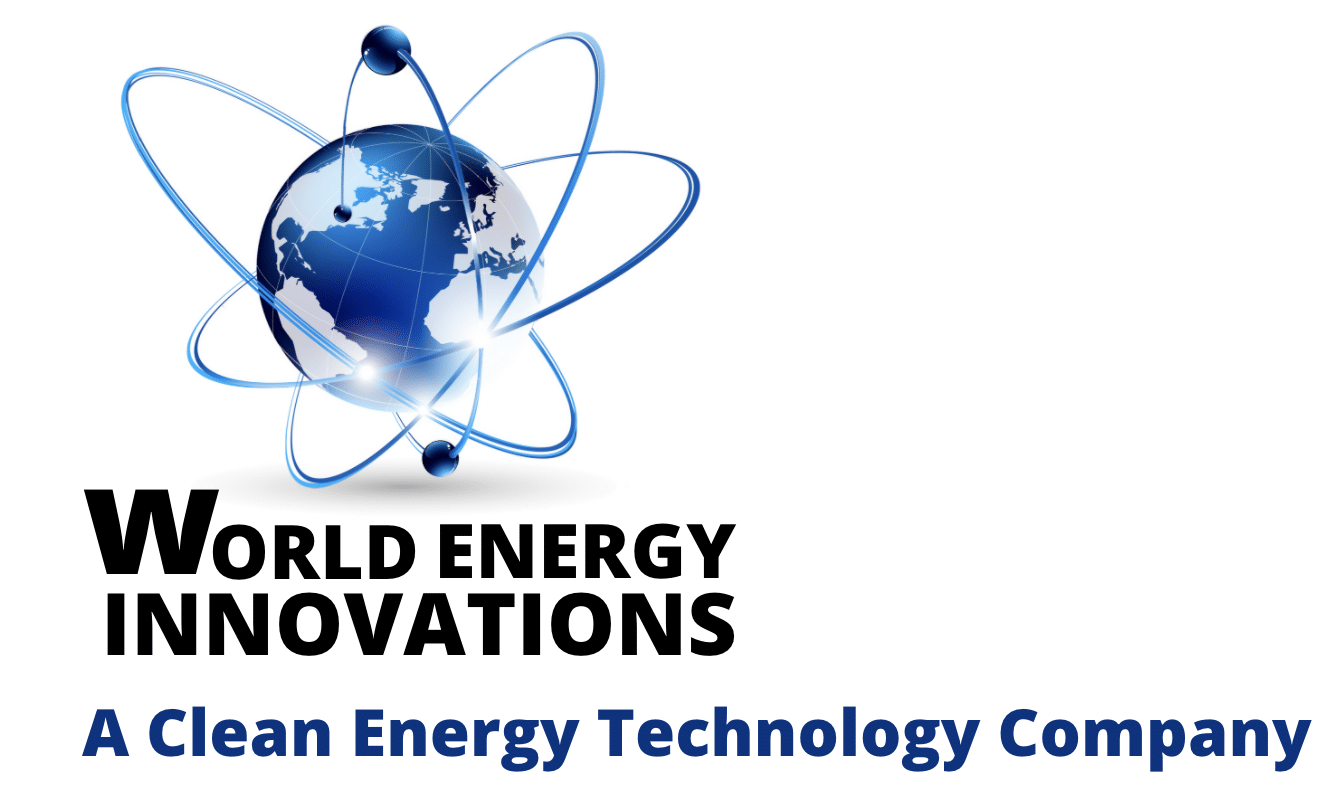Building Pressurization Strategy that revolutionizes energy efficiency in HVAC
 One of World Energy Innovations’ first patents was the “Bigfoot” twin-blower air handling unit. Bigfoot airhandlers are custom-engineered for any applications. Typically designed to deliver 200,000 scfm through two 100 horsepower fans, Bigfoot can be equipped with any combination of:
One of World Energy Innovations’ first patents was the “Bigfoot” twin-blower air handling unit. Bigfoot airhandlers are custom-engineered for any applications. Typically designed to deliver 200,000 scfm through two 100 horsepower fans, Bigfoot can be equipped with any combination of:
- Direct-fired burner and gas train
- Chilled water and reheat coils for cooling and dehumidification
- Hot water coils for heat recovery using low-grade waste heat from processes (e.g., cooling tower water)

Our Bigfoot units pressurize a building and thermodynamics laws to distribute warm and cool air without the need for ductwork. And by removing the need for ductwork and the fans necessary to drive air through it, building pressurization can greatly reduce the costs of moving air.
 Our Bigfoot and building pressurization:
Our Bigfoot and building pressurization:
- Circulate air using the thermodynamics laws
- Improve efficiency by preventing outside air from entering a building or facility through open doors or windows (uncontrolled infiltration)
- Use variable frequency drive motors for enhanced efficiency and control
- Have smart discharge heads that can respond to the heating and cooling needs of specific areas of a building or facility
- React automatically to infiltration and exfiltration needs to maintain building conditions
Learn how Bigfoot was used in energy systems designs for Ford Motor Company, General Motors, Goodyear, Ocean Spray, Shearer’s Foods and Hero MotoCorp.

The difference in density between hot and cold air and the resulting stack effect causes hot air to rise and cold air to fall. During the winter months, warm air rising inside a building promotes the infiltration of cold, dense air at the base of the building. During the summer months, hot air tends to collect at the roof promoting heat retention.
 Industry standard ignores building pressurization and strictly looks at space temperatures. Typically plants are negative – Exhaust more air then supplying. This causes cold air to rush in around the perimeter and especially at dock areas. To overcome these cold spots, plants run natural gas heat and still can’t keep the perimeter of the building warm. Heat is often short circuited and sucked out of the roof exhausts before it ever reaches the plant floor.
Industry standard ignores building pressurization and strictly looks at space temperatures. Typically plants are negative – Exhaust more air then supplying. This causes cold air to rush in around the perimeter and especially at dock areas. To overcome these cold spots, plants run natural gas heat and still can’t keep the perimeter of the building warm. Heat is often short circuited and sucked out of the roof exhausts before it ever reaches the plant floor.
WEI monitors both space temperature and building pressure – always maintain positive pressure, and improved temperature uniformity.
Introducing cold air at the roof level inverts the stack effect and the buoyancy of air drives pressurization, and increases efficiency of internal heat gain utilization thus reducing HV heating fuel use
